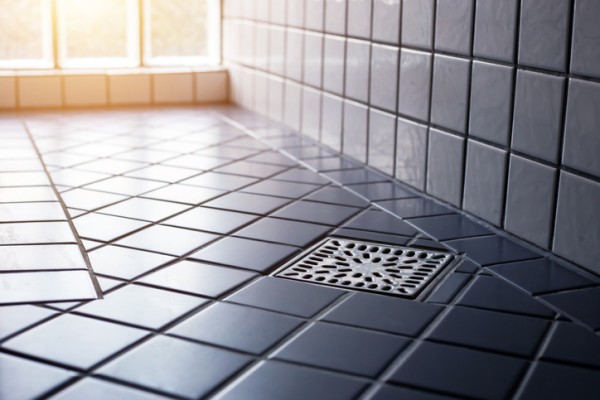
Bathroom floors need to do more than just look good — they have to handle water, provide safety underfoot and last for years without warping, rotting or cracking. Whether you’re renovating or building new, the right floor can make a big difference to how your bathroom performs over time.
So, what makes a good bathroom floor, and what should you look out for?
What makes a bathroom floor different?
Bathrooms are some of the wettest rooms in any home, so the flooring you choose needs to be highly water-resistant. Any surface exposed to water — including floors, walls and even cabinetry — must be designed to withstand constant moisture.
Your bathroom floor also needs to meet a few key criteria:
- It must be waterproof, or at least covered by a waterproof membrane.
- It needs to be slip-resistant, especially when wet.
- It should slope toward the floor waste, to allow water to drain properly.
- It must be comfortable to walk on, especially barefoot in colder months.
- It should be easy to clean and maintain.
Because of these demands, certain flooring types that work well in other parts of the house (like floating timber floors or carpet) aren’t suitable for bathrooms. For help understanding the role of the floor itself in a bathroom, see what is a floor?
Popular bathroom flooring options
Ceramic and porcelain tiles
By far the most common choice, tiles offer a wide range of colours, patterns and textures. Both ceramic and porcelain tiles are waterproof, durable and ideal for wet areas, though porcelain is denser and more water-resistant.
They’re designed for easy cleaning and can last decades when installed correctly. However, tiles must be laid over a solid, level subfloor, and the grout between them needs sealing to prevent water from seeping through.
Not all tiles are safe for use on floors — some wall tiles can be extremely slippery. Always choose floor-rated tiles that comply with slip-resistance requirements. For more, see anti-slip enhancements.
Vinyl flooring
Vinyl is a budget-friendly alternative that’s also water-resistant and relatively warm underfoot. It’s available in sheets, tiles or planks, and is usually quicker and cheaper to install than tiles.
The downside? If not sealed properly around edges or fixtures, water can still seep through and damage the subfloor. Vinyl also isn’t as durable long-term and may need replacing sooner than tile.
Other options
Less common, but still viable options (if correctly installed and sealed), include:
- Natural stone – luxurious but porous and requires regular sealing.
- Timber floorboards – only suitable with proper treatment and sealing.
- Linoleum – eco-friendly and water-resistant, but can be hard to source.
- Cork tiles – soft underfoot but must be sealed to protect against moisture.
Installation considerations
No matter which material you choose, proper installation is crucial in a bathroom.
- Waterproofing
The subfloor must be waterproofed using a membrane that complies with AS 3740:2010 – Waterproofing of domestic wet areas. In many states, this work must be carried out by a licensed professional. Learn more in Waterproofing and tiling. - Drainage and slope
The floor should slope gently toward a central waste to prevent pooling and promote proper drainage. This isn’t just a good idea — in many cases, it’s a legal requirement. - Slip-resistance
Flooring should meet minimum slip resistance ratings, especially for older residents or those with limited mobility. Slip-resistant tiles, non-slip coatings or anti-slip mats can improve safety. - Comfort and insulation
Tile and stone can be cold underfoot. Many homeowners now opt for underfloor heating to keep bathrooms comfortable during winter.
Styling and maintenance tips
Lighter coloured floors tend to reflect more light and can make smaller bathrooms feel bigger. Dark or matte surfaces, while stylish, may absorb light and make the space feel more enclosed.
You’ll also want to think about how easy your floor will be to keep clean. Tiles with wide grout lines may trap dirt and require regular sealing, while sheet vinyl is low maintenance but can show scuffs and wear over time.
Final thoughts
Choosing a bathroom floor is about more than just picking a colour or material — it’s about making sure your space is safe, comfortable and built to last. Tiles remain the go-to for durability and style, but well-installed vinyl and sealed alternatives can be effective too.
Regardless of the material, proper waterproofing, floor slope and slip resistance are non-negotiables. When done right, your bathroom floor can serve you well for decades.




